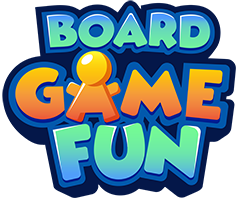How to Play Bridge
Ever wondered how to master a classic card game that combines strategy, partnership, and a touch of competition? Bridge might just be the perfect choice for you! While it has a reputation for complexity, don’t let that intimidate you. With the right approach—and this guide—you can ease into Bridge without spending hours learning obscure rules or buying special equipment.
Brief Game Overview
What is Bridge?
- A trick-taking card game played with four players in two partnerships.
- It involves bidding, where you and your partner communicate about your hands, then playing to meet (or surpass) the number of tricks you’ve bid to take.
Game Length
- Most casual Bridge sessions last around 45 minutes to an hour, but it can vary based on how many rounds you play.
Who Is It For?
- Perfect for those who love a mix of skill, teamwork, and a dash of competition. If you enjoy strategic planning and mind-reading your opponents, Bridge will keep you entertained for years to come.
Getting Started – What You’ll Need
Essential Materials: To play Bridge, all you need is:
- A Standard 52-Card Deck: Nothing fancy required—just grab a normal deck.
- Exactly 4 Players: You’ll pair off into teams of two, sitting opposite each other.
- Table Space: Make sure everyone can comfortably see the cards and participate in bidding.
Budget Considerations
-
- Bridge is very low-cost. If you want to get serious, invest in score pads or a digital scoring app—but it’s not necessary for casual play.
Step-by-Step Instructions on How to Play the Game
-
Setup
- Arrange Seating: Four people sit around the table, labeled as North, East, South, and West. North-South form one team; East-West form the other.
- Deal the Cards: One player shuffles and deals out all 52 cards, so each player ends up with 13 cards.
Establish Roles (Dealer, etc.): Typically, the person who dealt the cards starts the bidding, but you can rotate the dealing duties each round.
Gameplay Explanation
Phase 1: The Auction (Bidding)
- In turn, each player announces how many tricks they believe their team can win (beyond the first six tricks) and which suit will be “trump” if they become the “declarer.”
- Players can also pass (not bid) or raise an existing bid. Doubling or redoubling can raise the stakes if you believe the opponents are overreaching.
Phase 2: The Play
- The highest bidder becomes the declarer; their partner’s hand is laid down face-up on the table (the “dummy”).
- Each player contributes one card per trick. The highest card in the suit led wins the trick—unless a trump is played, which trumps all other suits.
- The declarer aims to fulfill the contract (their bid), while the opponents try to prevent this.
Phase 3: Scoring
- Points are awarded for each trick won above the six-trick baseline (called “book”).
- Bonus points are given for bidding and making higher “contracts.”
- If the declarer’s team fails to meet the bid, there are penalty points for each missed trick.
Scoring & Winning
Bridge scoring can be complex, but don’t let that deter you:
- Basic Tally: Each trick over the “book” (the first six) earns points for the declarer’s side, depending on the suit or no-trump.
- Undertricks: Failing your contract means the opponents get penalty points.
- Rubber Bridge vs. Duplicate Bridge: Different variations have slightly different scoring systems, but the core trick-based logic remains the same. Many beginners start with Rubber Bridge (standard social play) before exploring others.
Pro Tip: Using a Bridge scoring app can help while you learn. Focus on improving your bidding and card play instead of fumbling with pen and paper.
Secrets to Win Bridge
-
Bidding is Communication
Think of it like a code with your partner. Pay attention to each other’s bids to gauge hand strength. -
Count Your Points
Each high card (Ace, King, Queen, Jack) is worth something! Knowing these values helps you decide if your hand is strong enough to bid higher. -
Practice Makes Perfect
If you’re new, try a few informal hands just to get a feel. Don’t stress about advanced strategies at first—just get comfortable with the rhythm. -
Troubleshooting Common Issues
- Confusion About Bidding: Do some practice bidding drills where no cards are played; just review possible bids.
- Difficult Scoring: Stick to a simple scoring method or use an app so you can learn the flow of the game without number-crunching anxiety.
- Forgetting the Trump Suit: If you’re new, try starting with no-trump deals or simpler contracts to internalize the flow before adding suit-based complexities.
Variations & House Rules
- Rubber Bridge: The classic style, often played in homes and social clubs.
- Duplicate Bridge: Played in tournaments with multiple tables; everyone deals with the same cards for fairness.
- Chicago (Four-Deal Bridge): A quicker format if you don’t have time for a full rubber.
Troubleshooting: Common Issues and How to Address Them
-
Problem: Confusion about bidding rules
Solution: Take turns with practice bidding rounds until everyone feels comfortable. Remember, bidding is a conversation with your partner, hinting at your hand’s strengths and weaknesses. -
Problem: Keeping score seems complicated
Solution: Use a Bridge scoring app to simplify this process while you’re learning. Apps can handle the calculations, letting you focus on improving your game.
-
Problem: Understanding which cards are trump
Solution: Start with "no-trump" games to simplify learning, then gradually add the trump concept as you progress.
Frequently Asked Questions
1. How long does a typical game of Bridge take?
Most Bridge games last between 45 minutes and an hour, but this can vary based on the number of rounds and player experience.
2. Do I need a special deck to play Bridge?
No, Bridge only requires a standard 52-card deck.
3. How can I practice if I don’t have three other players?
There are several online Bridge platforms and mobile apps that allow you to play with or against AI opponents, perfect for practice.
4. Can beginners join a local Bridge club?
Absolutely! Many clubs welcome newcomers and even offer lessons for new players.

The Final Shuffle
Learning Bridge may seem challenging at first, but with a bit of practice, you’ll soon enjoy the thrill of bidding, strategizing with your partner, and winning tricks.
Once you’re comfortable with the basics, consider exploring different Bridge strategies or participating in friendly games at local clubs.
Have fun exploring Bridge! Share your progress, subscribe for more beginner-friendly game guides, and keep expanding your skills. Happy playing!


